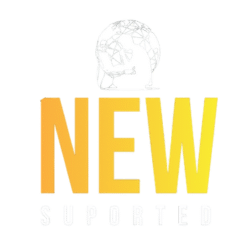Financial assistance for students with disabilities

Financial assistance for students with disabilities includes government grants, private scholarships, and work-study programs, providing essential support to help cover educational costs.
Financial assistance for students with disabilities plays a crucial role in enhancing educational opportunities. Have you ever wondered how these resources can empower students and ease their financial burdens? Let’s explore the available options and how to access them.
Understanding financial assistance options
Understanding financial assistance options is vital for students with disabilities. Numerous sources provide help, but knowing where to look is essential. This section will explore key areas of assistance available.
Types of Financial Assistance
Financial assistance comes in various forms. It’s important for students to understand the different options to find the best fit for their needs. This assistance can include:
- Grants: Funds that do not require repayment.
- Scholarships: Financial awards for academic achievement, often based on merit or need.
- Loans: Borrowed funds that must be repaid after graduation.
- Work-Study Programs: Part-time jobs to help cover educational costs.
Each type has its pros and cons; thus, students should evaluate them carefully. Additionally, understanding the eligibility criteria for each option can save time and effort.
Government Programs
Government programs often provide substantial resources for students with disabilities. Programs such as the Pell Grant can offer financial support based on need. Students should also investigate local and state resources that may provide additional aid.
Many community organizations also assist students in navigating the financial assistance landscape. These resources can provide guidance and support, ensuring that students take full advantage of available funding.
Furthermore, schools often have counseling services to help students identify the best options. Engaging with a financial adviser can clarify choices, making the process smoother.
Ultimately, exploring various financial assistance options is crucial for students with disabilities. Investing time in research may yield significant benefits. Don’t hesitate to ask for help and utilize resources—every bit of funding counts!
Government programs and benefits
Government programs and benefits play a crucial role in providing financial assistance for students with disabilities. These resources can help offset the costs of education, making it more accessible for those who need it most. Understanding the various programs available can empower students and their families to make informed decisions.
Federal Financial Aid Programs
One of the primary sources of financial assistance is federal aid. The government offers several programs, each designed to meet different needs. Some popular options include:
- Pell Grants: Need-based grants that do not require repayment.
- Federal Supplemental Educational Opportunity Grants (FSEOG): Additional grants for students with exceptional need.
- Federal Work-Study: Part-time employment opportunities while attending school.
These programs are crucial for many students, providing support to help cover tuition, fees, and living expenses.
State and Local Benefits
In addition to federal assistance, many states offer their own programs. Each state has distinct benefits tailored to their residents. These can include:
- State Grants: Financial help based on need and residency.
- Tuition Waivers: Reduced or waived fees for eligible students.
- Benefits for Special Education: Resources specifically for students with disabilities.
Students should explore these options as they can significantly reduce educational costs. Local organizations may also provide additional support tailored to community needs.
The application process for government benefits may seem overwhelming, but resources are available to help navigate it. Schools often have financial aid counselors who can assist with the forms and requirements. Taking advantage of these resources can lead to a smoother process and ensure that students receive the aid they qualify for.
Overall, understanding government programs and benefits is essential for students with disabilities looking to finance their education. Knowledge of available options empowers students to seek the assistance they need and take steps towards achieving their educational goals.
Private scholarships and grants

Private scholarships and grants are essential sources of financial assistance for students with disabilities. Unlike federal aid, these funds typically come from organizations, foundations, and private donors, often with specific eligibility criteria. Understanding how to seek and apply for these scholarships can make a significant difference in funding educational pursuits.
Types of Private Scholarships
Private scholarships can vary widely in terms of eligibility, amount, and application processes. Some common types include:
- Academic Scholarships: Based on academic achievement or potential.
- Need-based Scholarships: Based on financial need to support students from low-income families.
- Merit-based Scholarships: Awarded for specific talents or achievements, such as sports or arts.
Each scholarship has its unique focus and requirements, allowing students to find options that best suit their backgrounds and aspirations.
Grants from Private Organizations
In addition to scholarships, many private organizations offer grants specifically designed for students with disabilities. These grants can cover various costs such as tuition, books, and other educational expenses. Organizations often aim to promote education and inclusivity.
To apply for these grants, students can start by researching local nonprofits, community organizations, or even national programs that offer support. Many of these organizations have websites detailing their grant programs and application processes.
Networking and seeking assistance from school counselors can also be beneficial. They can guide students in identifying applicable grants and help locate resources to simplify the application process. Furthermore, some corporate entities provide scholarship programs as part of their commitment to social responsibility.
Overall, pursuing private scholarships and grants can significantly enhance funding options for students with disabilities. Being proactive in searching for these opportunities can lead to valuable resources and financial support that ultimately aid in achieving educational goals.
How to apply for assistance
Applying for financial assistance can be an overwhelming process, especially for students with disabilities. However, understanding the steps involved can significantly simplify this journey. Many organizations provide the necessary guidance, and breaking it down into manageable steps can make it easier.
Researching Available Options
The first step in applying for assistance is to research the various options available. Knowing what is out there can help students find the best fit for their needs. Some resources include:
- Federal Student Aid: Offers information on federal grants, loans, and work-study options.
- State Aid Programs: Explore opportunities available through local governments.
- Private Scholarships: Organizations and foundations that offer specific funds for eligible students.
Gathering accurate information about each option will help students understand their eligibility and the application requirements.
Gather Required Documentation
Before applying, it’s essential to prepare the necessary documents. Commonly required items include:
- Financial records: Tax returns and income statements.
- Identification: Social security number or student ID.
- Disability documentation: Verification of disability from a qualified professional.
Having these documents ready can expedite the application process and ensure that applications are complete.
Complete the Application
Each application will have specific requirements, but typically, students will need to fill out forms that provide personal and financial information. Take time to review each form carefully to avoid mistakes. Double-check for accuracy to ensure a smooth application process.
After submitting the application, keep track of deadlines and updates. Some programs may require additional information or follow-up after the initial application. Being proactive can help secure the needed assistance.
Overall, knowing how to apply for assistance involves researching options, preparing documents, completing applications, and following up. With careful planning and attention to detail, students with disabilities can successfully navigate the process and find the support they need.
Tips for maximizing your funding opportunities
Finding financial assistance can be challenging, but there are ways to maximize your funding opportunities. By being strategic and informed, students with disabilities can increase their chances of receiving the support they need for their education.
Start Early and Stay Organized
It’s important to start the search for funding as early as possible. Gather information about scholarships, grants, and loans well in advance. Keeping everything organized will help you track deadlines and requirements. Consider using a spreadsheet or a planner to:
- List all funding sources: Include deadlines and criteria for each.
- Track applications: Note the status of each application you submit.
- Set reminders: Keep important dates in mind to avoid missing out.
Being organized can save time and reduce stress during the application process.
Tailor Your Applications
One size does not fit all when it comes to financial assistance applications. Each scholarship or grant has different requirements, so be sure to tailor your application for each one. Highlight aspects of your experience and qualifications that are most relevant to the specific funding source. This can include:
- Your personal story: Share your journey and how it shaped your educational goals.
- Academic achievements: Notable accomplishments can make your application stand out.
- Community involvement: Show how you’re contributing to your community.
Personalizing your applications can significantly improve your chances of success.
Utilize Resources and Support
Take advantage of various resources that can assist in your search for funding. Many organizations offer workshops or one-on-one support for students applying for financial assistance. Resources to consider include:
- School counselors: They can provide valuable guidance and information.
- Community organizations: Local nonprofits often have resources specifically for students with disabilities.
- Online platforms: Websites that aggregate scholarships and financial aid can simplify the search.
Utilizing available resources can provide insights and support that strengthen your applications.
By implementing these tips for maximizing your funding opportunities, students with disabilities can effectively enhance their chances of securing financial assistance for their education. Being proactive, organized, and personalized in the approach will lead to more successful outcomes.
FAQ – Frequently Asked Questions about Financial Assistance for Students with Disabilities
What types of financial assistance are available for students with disabilities?
There are various forms of assistance, including government grants, private scholarships, and work-study programs.
How can I start the application process for financial aid?
Begin by researching available funding options, gathering necessary documentation, and completing the applications well in advance.
Are there resources available to help with the application process?
Yes, school counselors and community organizations often provide guidance and support for students applying for financial assistance.
What can I do to improve my chances of receiving funding?
Stay organized, tailor each application to specific scholarships, and utilize all available resources to maximize your funding opportunities.






